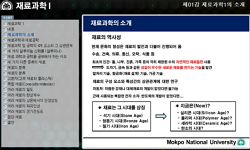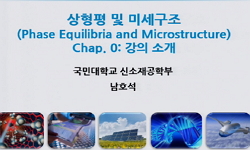Ternary Ti-B-C coatings were synthesized on WC-Co and Si wafers substrates by a PECVD technique using a gaseous mixture of TiCI₄, BCI₃, CH₄, Ar, and H₂. The effects of deposition variables such as substrate temperature, gas ratio, Rx=[BCI₃...
http://chineseinput.net/에서 pinyin(병음)방식으로 중국어를 변환할 수 있습니다.
변환된 중국어를 복사하여 사용하시면 됩니다.
- 中文 을 입력하시려면 zhongwen을 입력하시고 space를누르시면됩니다.
- 北京 을 입력하시려면 beijing을 입력하시고 space를 누르시면 됩니다.
https://www.riss.kr/link?id=A76181501
- 저자
- 발행기관
- 학술지명
- 권호사항
-
발행연도
2005
-
작성언어
Korean
- 주제어
-
등재정보
KCI등재
-
자료형태
학술저널
- 발행기관 URL
-
수록면
106-111(6쪽)
-
KCI 피인용횟수
0
- 제공처
- 소장기관
-
0
상세조회 -
0
다운로드
부가정보
다국어 초록 (Multilingual Abstract)
Ternary Ti-B-C coatings were synthesized on WC-Co and Si wafers substrates by a PECVD technique using a gaseous mixture of TiCI₄, BCI₃, CH₄, Ar, and H₂. The effects of deposition variables such as substrate temperature, gas ratio, Rx=[BCI₃/(CH₄+BCI₃)] on the microstructure and mechanical properties of Ti-B-C coatings were investigated. From our instrumental analyses, the synthesized Ti-B-C coatings was confirmed to be composites consisting of nanocrystallites TiC, quasi-amorphous TiB₂, and amorphous carbon at low boron content, on the contrary, nanocrystallites TiB₂, quasi-amorphous TiC, and amorphous carbon at relatively high boron content. The microhardness of the Ti-B-C coatings increased from ~23 ㎬ of TiC to -38 ㎬ of Ti0.33B0.55C0.11 coatings with increasing the boron content. The Ti0.33B0.55C0.11 coatings showed lower average friction coefficient of 0.45, in addition, it showed relatively better wear behavior compared to other binary coatings of TiB₂ and TiC. The microstruture and microhardness value of Ti-B-C coatings were largely depend on the deposition temperature.
목차 (Table of Contents)
- Abstract
- 1. 서론
- 2. 실험 방법
- 3. 결과 및 고찰
- 4. 결론
- Abstract
- 1. 서론
- 2. 실험 방법
- 3. 결과 및 고찰
- 4. 결론
- 후기
- 참고문헌
동일학술지(권/호) 다른 논문
-
Co/Ni 복합 실리사이드 제조 온도에 따른 측벽 스페이서 물질 반응 안정성 연구
- 한국표면공학회
- 송오성(Ohsung Song)
- 2005
- KCI등재
-
하이브리드 코팅시스템에 의해 제조된 Ti-Cr-Si-N 박막의 미세구조 및 기계적 특성연구
- 한국표면공학회
- 강동식(Dong Shik Kang)
- 2005
- KCI등재
-
하이브리드 코팅 시스템으로 제조된 초고경도 Cr-Si-C-N 나노복합 코팅막의 미세구조 및 기계적 특성
- 한국표면공학회
- 장철식(Chul Sik Jang)
- 2005
- KCI등재
-
- 한국표면공학회
- 송우창(Woochang Song)
- 2005
- KCI등재
분석정보
인용정보 인용지수 설명보기
학술지 이력
| 연월일 | 이력구분 | 이력상세 | 등재구분 |
|---|---|---|---|
| 2026 | 평가예정 | 재인증평가 신청대상 (재인증) | |
| 2022-01-28 | 학술지명변경 | 외국어명 : Journal of The Korean Institute of Surface Engineering -> Journal of Surface Science and Engineering |  |
| 2020-01-01 | 평가 | 등재학술지 유지 (재인증) |  |
| 2017-01-01 | 평가 | 등재학술지 유지 (계속평가) |  |
| 2013-01-01 | 평가 | 등재 1차 FAIL (등재유지) |  |
| 2010-01-01 | 평가 | 등재학술지 유지 (등재유지) |  |
| 2008-01-01 | 평가 | 등재학술지 유지 (등재유지) |  |
| 2005-01-01 | 평가 | 등재학술지 선정 (등재후보2차) |  |
| 2004-01-01 | 평가 | 등재후보 1차 PASS (등재후보1차) |  |
| 2003-01-01 | 평가 | 등재후보학술지 유지 (등재후보1차) |  |
| 2002-01-01 | 평가 | 등재후보 1차 FAIL (등재후보1차) |  |
| 1999-07-01 | 평가 | 등재후보학술지 선정 (신규평가) |  |
학술지 인용정보
| 기준연도 | WOS-KCI 통합IF(2년) | KCIF(2년) | KCIF(3년) |
|---|---|---|---|
| 2016 | 0.49 | 0.49 | 0.39 |
| KCIF(4년) | KCIF(5년) | 중심성지수(3년) | 즉시성지수 |
| 0.36 | 0.34 | 0.411 | 0.16 |




 ScienceON
ScienceON DBpia
DBpia







